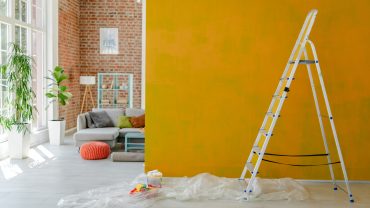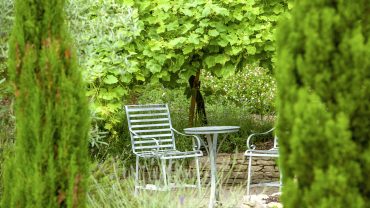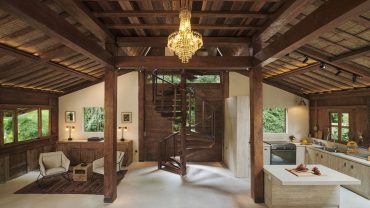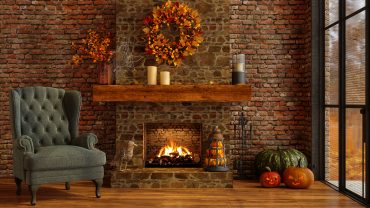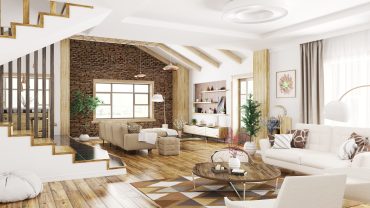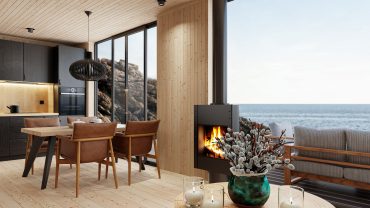Brutalist interior design, characterised by its raw, unpolished beauty, draws inspiration from the post-war, industrial architectural movement of the mid-twentieth century that emphasised minimalism, functionality, and a strong, structural presence.
Brutalist house interior design brings the foundational philosophy of Brutalism inside, creating spaces characterised by simplicity, boldness, and rich textures. Materials like bare brick, concrete, glass, and galvanised steel are used to symbolise this resilience and ruggedness.
This is – to some – interior design at its most pure and simple. There’s no unnecessary clutter, few ornaments, no textured wallpaper or bright throws. When we talk about Brutalism, interior spaces are raw and aggressive.
So if you’re stripping back an old farmhouse or want to make your living space more authentic, Brutalist interior design may be just what you’re looking for.
A Short History of Brutalist Interior Design

1960s Brutalist architecture in London (Credit: Busà Photography via Getty Images)
From the French word for concrete – béton brut – the influences of Brutalist design interiors are deeply rooted in the post-war architectural movement that began in the 1950s. Architects like Le Corbusier and Paul Rudolph, among others, pioneered this style, championing materials and forms that echoed strength and stability.
The transition from architecture to interior design was natural, as the principles that defined Brutalist buildings – such as an emphasis on raw and unpolished materials, geometric forms, and a monolithic character – found their expression in furniture, lighting, and decor. This design philosophy speaks to a desire for honesty in materials and a reflection of the structural essence of a space.
The Key Principles of Brutalism: Interior Design at its Most Raw

Brutalist interior design (Credit: gremlin via Getty Images)
At the heart of Brutalist interior design are principles that prioritise materials, texture, and a monochromatic colour palette.
Natural Materials
Brutalist interior design embraces the stark, inherent beauty of natural materials. Concrete, steel, wood, and stone are frequently used in their most unrefined and unpolished forms. These materials are chosen for their texture, durability, and ability to age gracefully, contributing to the authenticity and groundedness of your space.
Colour Palette
The colour palette in Brutalist house interior design is often subdued, focusing on shades that enhance the natural beauty of the materials used. Neutral tones like greys, browns, and beiges dominate, complemented occasionally by deep, muted accents and, on occasion, pastels. This minimalistic approach to colour emphasises texture and form over ornamentation.
Function & Comfort
Despite its hard aesthetic, Brutalist interior design doesn’t compromise on comfort and functionality. Spaces are designed with human experience in mind, ensuring the stark beauty of materials serves a purpose. Furniture is placed thoughtfully, and living areas are configured to be both inviting and practical.
Furniture
Furniture in Brutalist design interior spaces often appears as bold, sculptural statements. Heavy, solid wood tables, concrete benches, and steel chairs are common, celebrating the materials’ natural textures. The furniture’s design emphasises clean lines and geometric forms, serving both functional and aesthetic purposes.
Artistic Touches & Handcrafted Pieces
Handcrafted elements and artistic pieces play a significant role in adding warmth and uniqueness to the Brutalist interior. Artworks, often abstract and large in scale, complement the space’s geometric lines and textures. Handmade ceramics, textiles, and metalworks help to balance the industrial feel.
The Natural World
Incorporating elements of the natural world is crucial to softening the starkness of Brutalist house interior decor. Indoor plants, natural light, and water features can introduce a sense of life and movement, creating a contrast with the static, monumental qualities of the design.
Divisive Design: Brutalist House Interiors

Modern brutalist concrete interior (Credit: tiero via Getty Images)
What exactly is Brutalist interior design? As designers delve deeper into the raw principles of Brutalism, this approach stands as a striking testament to the allure of stark simplicity. By weaving these elements into contemporary spaces, Brutalist design declares a bold, unmistakable stance that defies the familiar comfort of mainstream styles. Yet, when executed with precision, Brutalist interiors achieve a captivating balance – dramatically impactful yet surprisingly cosy.




